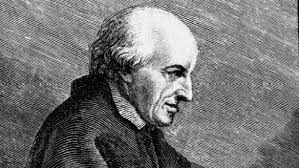Johann Friedrich Fasch (1688–1758) was a prominent German Baroque composer and contemporary of Johann Sebastian Bach. Though not as widely recognized today, Fasch’s music was highly regarded in his time and continues to be appreciated for its vibrant orchestration and expressive qualities. This article explores ten of Fasch’s most notable compositions, showcasing the diversity and creativity of his work.
1. Concerto in D Major for Trumpet, 2 Oboes, Strings, and Basso Continuo, FWV L
One of Fasch’s most celebrated works, this concerto highlights the brilliance and virtuosity of the trumpet. The lively and majestic opening movement sets the stage for a piece filled with intricate interplay between the soloist and the ensemble.
2. Overture in G Minor, FWV K
This overture, a form popular in the Baroque period, is characterized by its contrasting fast and slow sections. The piece exhibits Fasch’s mastery of orchestration, blending wind and string instruments to create rich textures.
3. Concerto in G Major for Flute, Oboe, Bassoon, Strings, and Basso Continuo, FWV L
This charming concerto features a unique combination of solo instruments, providing a delightful interplay of timbres. The flute and oboe passages are particularly notable for their lyrical qualities, while the bassoon adds depth to the ensemble.
4. Sinfonia in G Minor, FWV M
Fasch’s sinfonias are among his most expressive orchestral works. The Sinfonia in G Minor stands out for its dramatic and emotive content, utilizing dynamic contrasts and harmonic complexity to engage the listener.
5. Concerto in D Minor for Violin, Oboe, and Strings, FWV L
This concerto showcases Fasch’s skill in writing for strings and woodwinds. The violin and oboe dialogue beautifully, weaving melodic lines that are both intricate and expressive, making it a favorite among Baroque music enthusiasts.
6. Concerto in C Minor for Bassoon, Strings, and Basso Continuo, FWV L
A rare showcase for the bassoon, this concerto highlights the instrument’s rich, sonorous tones. Fasch’s writing allows the bassoon to shine both in solo passages and in dialogue with the strings, offering a refreshing take on Baroque concerto form.
7. Suite in B-flat Major, FWV K
Suites were a popular form in the Baroque era, consisting of a series of dance movements. Fasch’s Suite in B-flat Major is notable for its elegant and lively movements, each with distinct character and charm.
8. Cantata “O Jesu Christ, mein’s Lebens Licht”
This sacred cantata exemplifies Fasch’s contribution to vocal music. The piece combines expressive choral writing with richly ornamented instrumental parts, reflecting the deep spiritual content of the text.
9. Overture in G Major, FWV K
Another fine example of Fasch’s overtures, this work features energetic fast sections contrasted with lyrical slow movements. The piece is marked by its buoyant rhythms and clear, bright orchestration.
10. Concerto in B-flat Major for Horn, Strings, and Basso Continuo, FWV L
The horn takes center stage in this concerto, displaying Fasch’s innovative use of the instrument in a solo capacity. The piece is characterized by its regal and stately themes, making it a standout in Fasch’s oeuvre.
Conclusion
Johann Friedrich Fasch’s music is a treasure trove of Baroque elegance and innovation. His compositions, ranging from concertos and overtures to cantatas, reveal a composer of considerable skill and imagination. Whether you’re a long-time admirer or new to his work, these ten compositions offer a compelling introduction to Fasch’s musical legacy.


Comments are closed